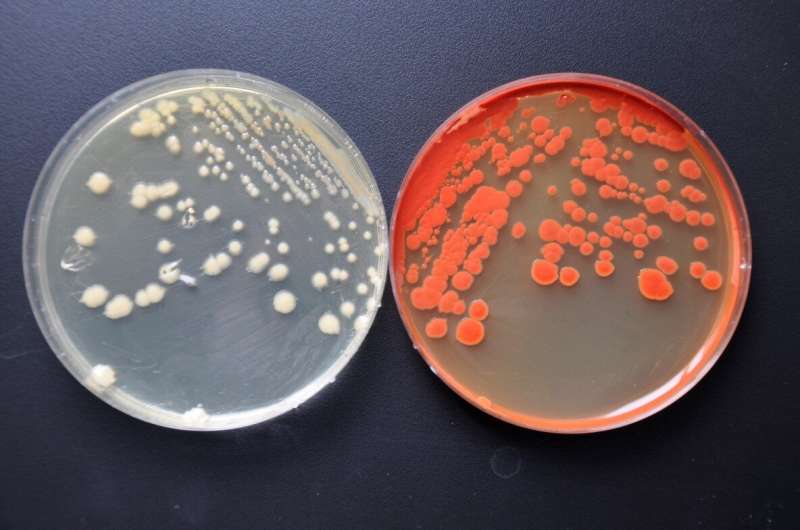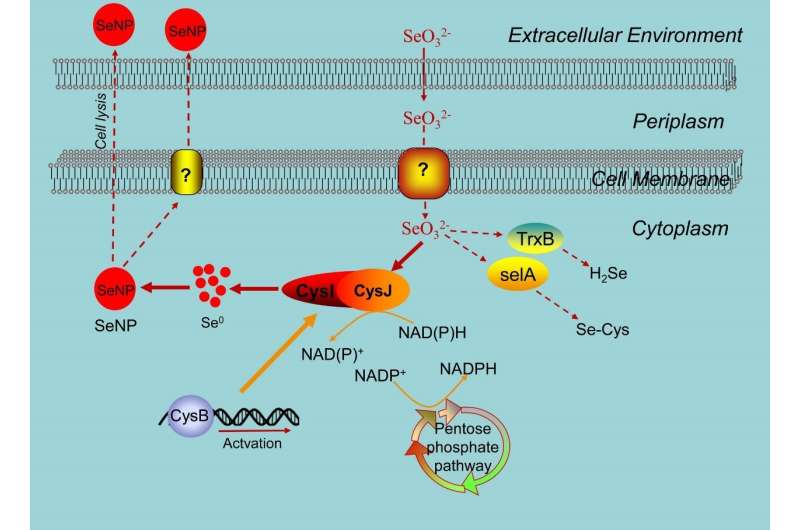Researchers isolate bacterial strain that shows extremely high tolerance to selenite

Recently, a research team led by Prof. WU Lifang from the Institute of Intelligent Machines of the Hefei Institutes of Physical Science (HFIPS) isolated a bacterial strain with extreme tolerance to selenite. They also discovered in vivo sulfite reductase-mediated selenite reduction for the first time.
Selenite is extremely biotoxic; the biotransformation of selenite into selenium nanoparticles (SeNPs) by microorganisms is gaining increasing interest. However, the relatively low selenite tolerance and slow processing by known microorganisms limit practical applications.
In this study, a highly selenite-resistant strain was isolated from coal mine soil and identified as Providencia rettgeri HF16. Remarkably, 5-mM selenite was entirely transformed by this strain within 24 hours, and SeNPs were detected after only two hours of incubation, which is a more rapid conversion than that observed in other microorganisms.
To push the study further, the team analyzed isobaric tags for relative and absolute-quantitation-based proteomics and tested key enzyme activity to verify the possible mechanism of selenite detoxification and SeNP biosynthesis by isolating HF16.
Surprisingly, they found for the first time that a bacterial strain was capable of transforming toxic selenite into Se0, efficiently via a sulfite reductase-mediated selenite reduction pathway with NAD(P)H serving as the electron donor, shedding new light on its molecular mechanism.
Considering the high selenite resistance and robust biotransformation capacity, HF16 could constitute a versatile selenite bioconversion platform suitable for different biotechnological applications.

More information: ShengWei Huang et al. Speeding up selenite bioremediation using the highly selenite-tolerant strain Providencia rettgeri HF16-A novel mechanism of selenite reduction based on proteomic analysis, Journal of Hazardous Materials (2020). DOI: 10.1016/j.jhazmat.2020.124690
Journal information: Journal of Hazardous Materials
Provided by Chinese Academy of Sciences


















